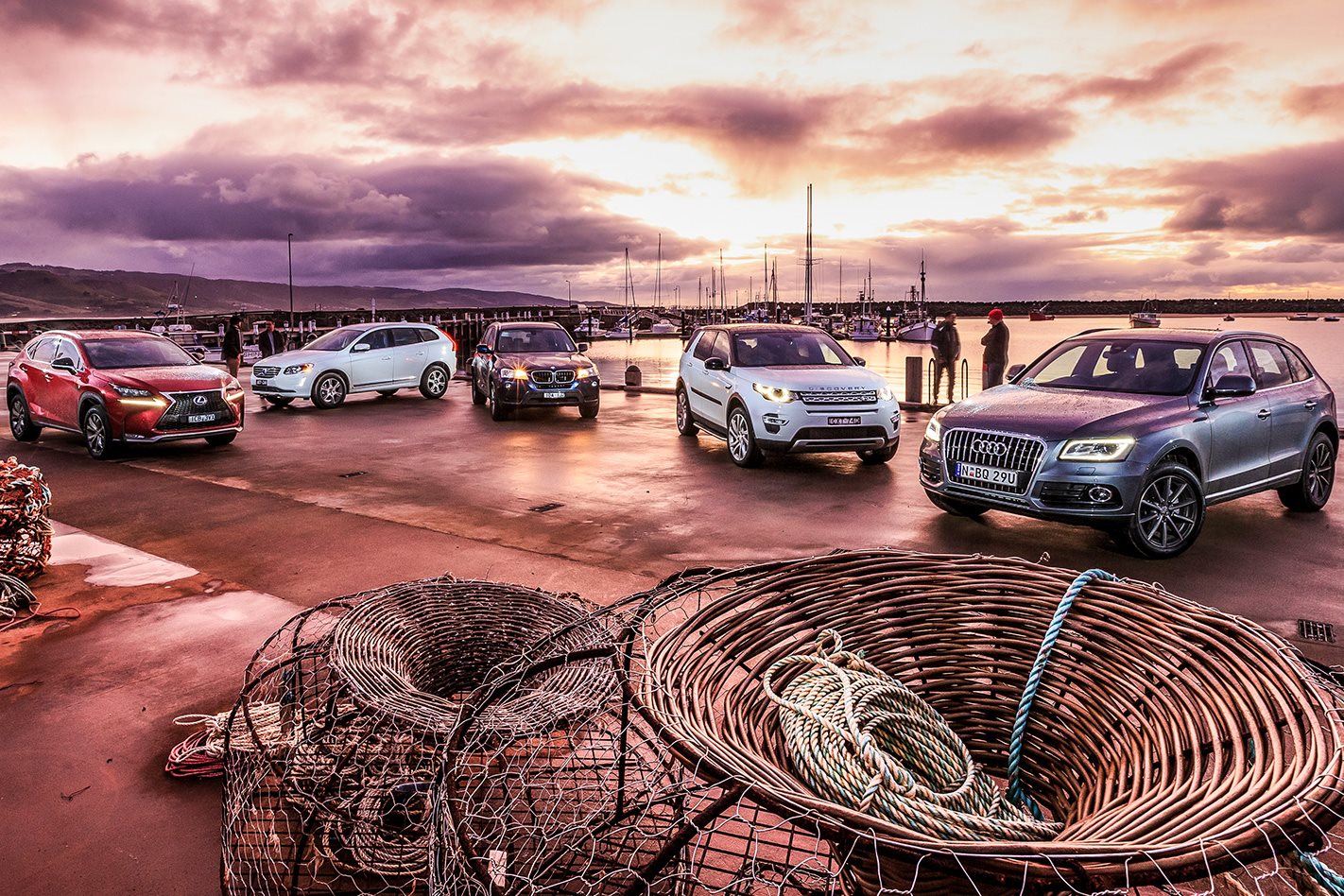A DOZEN years ago, nobody would have foreseen the fall of CDs, the rise of The Greens, or Matthew McConaughey’s career-defining turn in True Detective – a true McConaissance!
The same applies to SUVs, which from a low base back then are now closing in on passenger-car market share to be the dominant force. Like their on-limit handling once was, the tipping point is coming sooner than you might think.
And nowhere is that truer than in Audi’s case, where its Q5 – the long-reigning medium-sized premium SUV – comfortably outsells the A4 range that begat it.
The Ingolstadt brand’s position is under threat, however, with no fewer than three all-new or facelifted foes driving interest in a class that has grown by more than 25 percent this year alone. Enter the box-fresh Land Rover Discovery Sport and Lexus NX, joining Volvo’s XC60, revamped in late 2013, and the model that established this niche 11 years ago, BMW’s X3.
Hottest right now is the supply constrained Disco Sport, attracting waiting times of nine months and counting. Replacing the forgotten Freelander, Tata-owned Land Rover has based it on a heavily modified version of Ford’s EUCD (Mondeo) platform also underpinning the Range Rover Evoque that so obviously inspired this newcomer’s handsome styling.
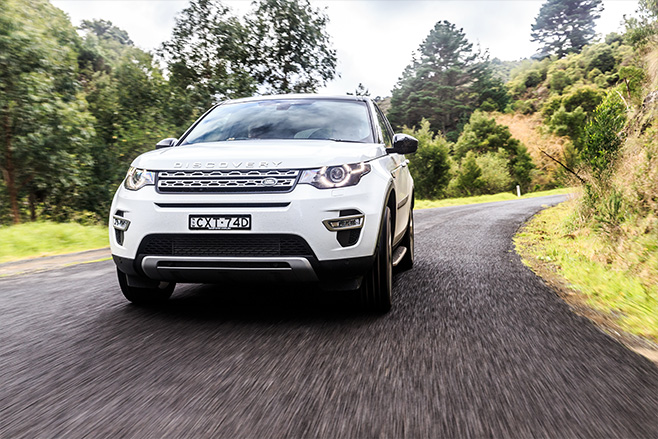
While matching every SUV here with its unibody construction, five-seat wagon practicality and family friendly cargo flexibility, satellite navigation, climate control, Bluetooth connectivity, a rear-view camera, electrification for the driver’s seat and tailgate, and an idle-stop system, the Disco Sport also standardises Autonomous Emergency Braking (as does the XC60 that pioneered it), leather upholstery and five USB ports. But the Disco Sport is Robinson Crusoe here in also delivering Land Rover’s proper off-road-enhancing Terrain Response tech with Hill Descent Control.
Additionally, on top of the usual HSE Luxury features like heated/vented front seats, hi-def sat-nav, digital radio, auto high beam and xenon headlights, ours boasted a third-row seating option ($1990), Meridian audio upgrade with rear-seat video entertainment ($5500), panoramic glass roof ($1800), 20-inch rims ($1500), contrasting roof ($920) and sundry other extras. Result? $82,460. Throw in the ugly dealer-fit door rub strips, side steps and towbar fitted to the test car and you’re pushing past $85K…
Audi’s Q5 equivalent is the 2.0 TDI quattro Sport Edition. For a tenner under $70,000 (or $71,797 thanks to blind-spot warning, lane-change alert, adaptive cruise control, xenon headlights and heated front seats), it brings sports buckets and 19-inch alloys to a comprehensive equipment set, though the Four-Ringed German’s AEB is AWOL, betraying the Audi’s seven birthdays way more than its still-attractive styling.
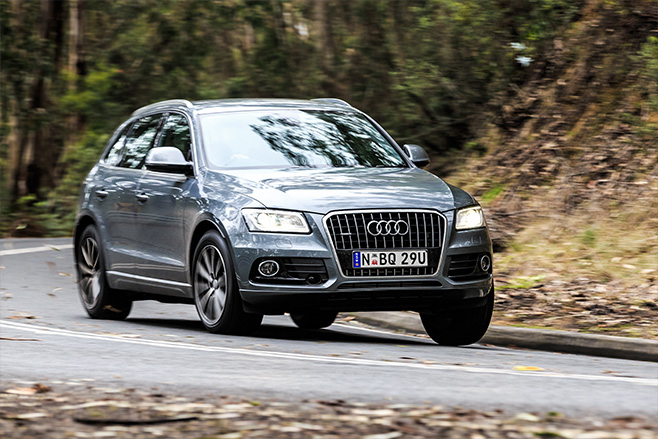
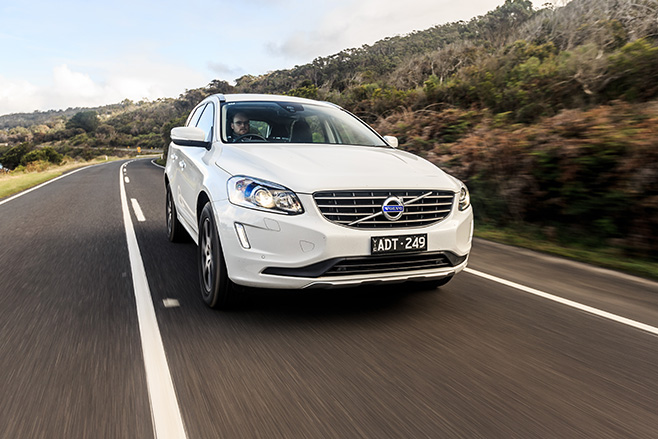
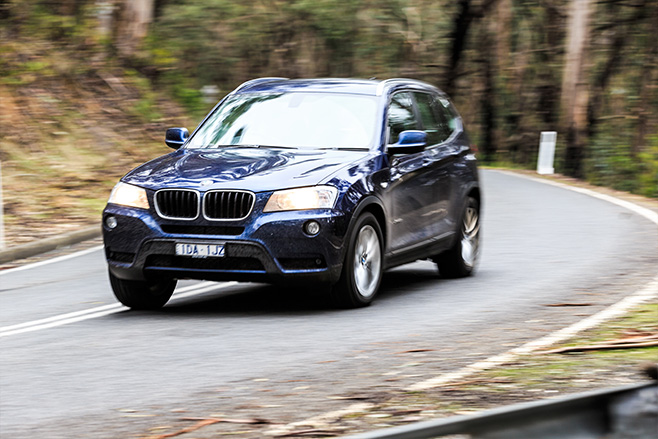
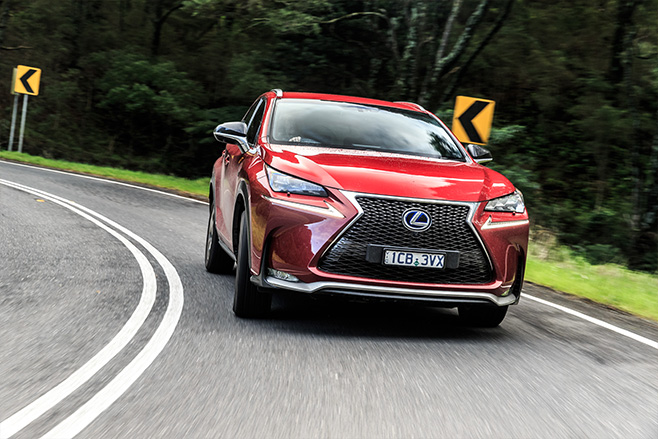
Let’s start with the last one. Audi, please step up. While the Q5’s A4/A5-esque dash might appear dated and overly familiar, with a scattered array of buttons, the fundamentals are nigh-on perfect since everything works as intended. Unwavering consistency rules. Crisp instruments, superb comfort on enveloping seats, ample space (aided by sliding rear cushions), seductively tactile surfaces and a lush feel to every operation are key cabin hallmarks.
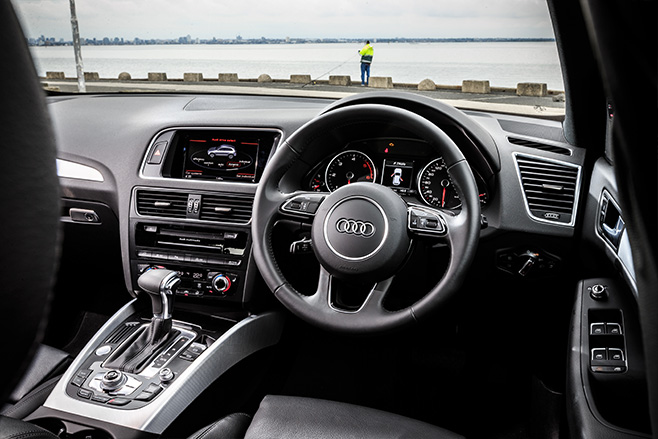
Honed in the Evoque, the Disco Sport’s ‘cool’ cabin themes centre around simplicity infused with a clean and contemporary look that is totally on-brand. From the elegant steering wheel and large central touchscreen to the classy controls, multitude of smartphone/tablet attachments and gorgeous leather seats that allow for a sporty, low-set driving position, there’s enough style and substance here to make a Range Rover owner question their purchasing wisdom.
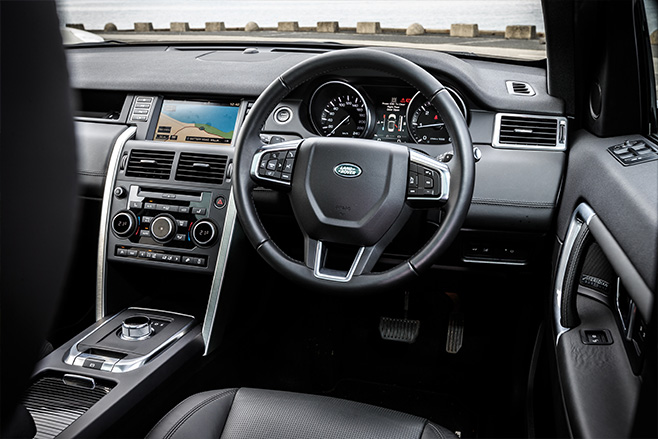
And remember, the Disco Sport can also be a 5+2 seater, though it is strictly kids-only. Stupidly, third-row access is only possible from the driver’s side, exposing a weird left-hand-drive bias in this UK-made vehicle. While we’re fussing, the touchscreen infotainment operation is fiddly and slow, cabin plastics quality varies, and the novelty of the rise-and-twist cylindrical transmission lever wore off last decade.
‘Cushy’ ably sums up the Volvo’s likeable interior, brandishing unmatched solidity and cohesiveness. Smooth surfaces, rubberised switches, brushed metal, stitched leather… it’s like a sophisticated dominatrix’s kitchen inside.
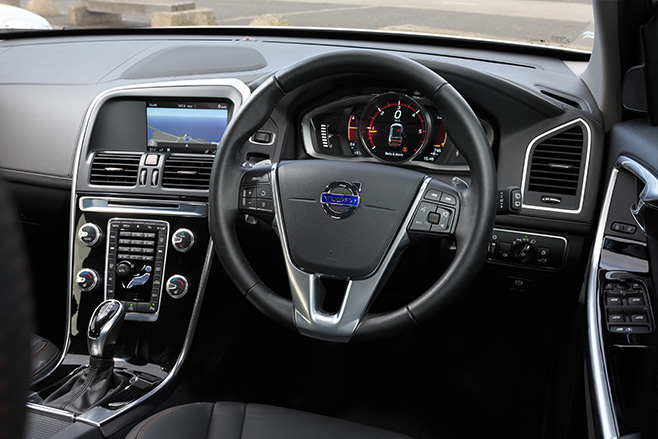
That four adults can travel painlessly in sumptuous seats that literally hug you for hours on end further heightens what remains an enticingly business class cabin experience. Less welcome are the XC60’s massively thick B-pillars that could elicit claustrophobia in a caterpillar, not to mention smallish door apertures, the triangular pitch of the side windows that eats into headroom, and a ride that never quite settles. More on that later.
Smaller in every major dimension including wheelbase, the Lexus is never going to win the space race, particularly when its battery and electric motor gubbins hide beneath its rear quarters, resulting in nosebleed-section second-row seating. So welcome to ‘cosy’ then. Kids should love it.
Despite an almost oppressive amount of funereal trim in the F-Sport, the NX isn’t actually cramped. Also, its unique and intriguing fascia design, super-soft leather seats and fanatical build quality deserve credit. Proudly Japanese in presentation and texture, even the somewhat messy switchgear makes sense with greater exposure. Just don’t get us started on the diabolical finger-touch controller. We do like the Volvo-style changeable dials, however, which go from goodie-two-shoes charge-meter to devilish tacho at a single press.
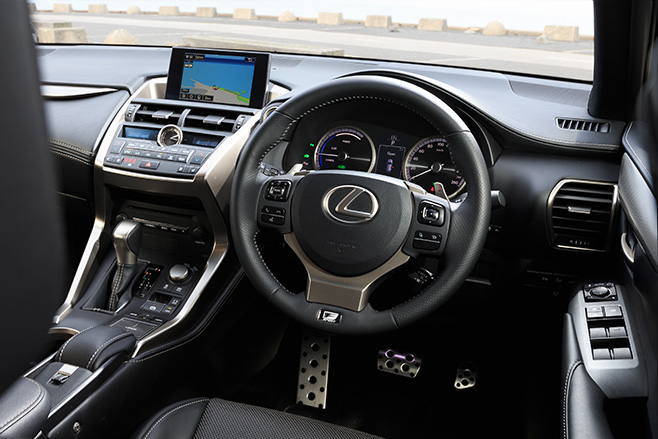
It gets worse for the BMW’s passengers, who must endure an annoyingly fidgety ride, as well as a rear seat suffering from insufficient cushion support (resulting in splayed-leg syndrome), a hard and overly reclined backrest, and some embarrassing fit and trim (un)finish issues.
Only an excellent driving position, a logical iDrive controller, crystal-clear dials and a voluminous boot save the day for the X3. Well, those plus points and its revvy 135kW/270Nm 2.0-litre four-cylinder turbo-petrol engine.
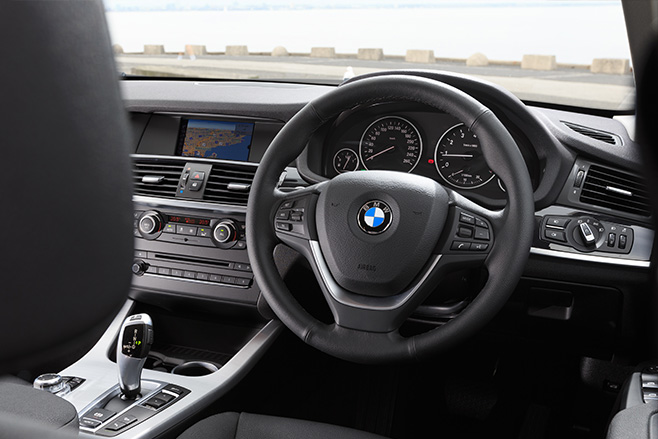
Having driven the first-rate 140kW/400Nm 2.0-litre turbo-diesel alternative, we reckon the latter would feel even more muscular through the mid-range, while bettering its petrol brethren’s hefty 12.3L/100km test average. Based on BMW’s lab versus real-world figures, we calculate the 25kg-heavier xDrive 20d would save close to 4L/100km, putting it right up there with the thrifty Volvo at an estimated 8.5L/100km.
The X3 also remains faithful to recent BMW practice with its zombie-like low-speed steering feel. The helm only resuscitates once you’re pedalling briskly, finally connecting the driver with reasonably crisp and controlled turn-in. In dry and smooth conditions, fun and agility are back on the menu, but the X3’s Dunlop 245/50R18 tyres lack grip on wet roads. Worst of all, their run-flat construction contributes to a perennially pattery motion that exposes just how unsettled the X3’s ride can be on poor surfaces. If you’re keen on the BMW, adaptive dampers and better rubber should be option-box essentials.
If performance and economy are paramount, the front-drive XC60 D4 is the SUV for you, overcoming its 30kg weight penalty and limited traction to match the X3 xDrive 20i’s sprint time. But once into triple digits, the swift Swede pulls ahead emphatically – 0.7sec quicker to 120km/h, 2.0sec to 140, and an incredible 4.7sec clear by 160.
As far as diesels go, Volvo’s 133kW/400Nm 2.0-litre four-cylinder Drive-E unit soars. There’s some torque steer at low speeds and on wet surfaces but it’s within manageable limits, and it feels downright vigorous shifting between intelligently spaced ratios. Make no mistake, there’s real velvety fire behind the ageing Volvo’s visage.
While the Volvo’s 8.1L/100km average isn’t spectacular, the next best of 9.2 (Audi) and 10.1 (Lexus) were significantly thirstier. On the flipside, however, the XC60 suffered the longest braking distance from 100km/h to zero – 39 metres against a test-best of 36.7 for the grippy Q5.

While on the topic of steering and ride issues… hello, Lexus. Always numb and artificial in feel – does Sega supply the hardware? – the NX is simply not interested in fostering meaningful man/machine connections. And that’s a shame because the NX300h’s chassis is actually a competent one, with decent balance and fluidity until it’s hurried. Then the overly zealous stability wardens stick their boots in after just a whiff of traction loss, cutting power and fun with ham-fisted authoritarianism. A weirdly grabby regenerative braking system fuels further dynamic alienation.
Equally annoying, the NX’s ride – on 18s like the other dynamic disappointments, coincidentally – jostles passengers about, though thankfully with less force than the uncomfortable BMW. But what’s most cloying about the NX’s deficiencies is that flush Toyota chose to inflict a 10-year-old RAV4 chassis (albeit heavily modified) and other parts-bin bits into this booming category, rather than spending the time and money necessary to make the NX great.
Still, positives abound. Powered by a 147kW/210Nm 2.5-litre Atkinson-cycle series parallel petrol/electric hybrid unit (just like Camry), driving all four wheels via a droney six-step CVT transmission, the NX scores a thumbs-up for overcoming its heft (the group’s worst at 1800kg) to keep sight of the punchy XC60 and X3.
Assisted by a seamlessly activated 50kW motor electrifying the rear axle, it can hustle along at a cracking pace, building up speed effortlessly – and surreptitiously, so beware – all while averaging 10.1L/100km, which is impressive considering the Lexus’s Rubenesque mass.
Both the Q5 and Disco Sport are lumbered with ageing and soon-to-croak turbo-diesels. In the Audi’s case, it’s the VW Group’s long-lived 130kW/380Nm 2.0-litre TDI, while the Land Rover at least has a bit more oomph on its side thanks to a 140kW/420Nm PSA/Ford unit. Both predominantly drive the front wheels via a seven-speed dual-clutch and nine-speed torque-converter auto respectively.
The issue with both are levels of off-the-line lag that just isn’t an issue in the other vehicles here. Nothing really helps the interminable hesitation before the torque comes cascading through to the wheels. Disabling the (equally lethargic) idle-stop system on the British SUV helps a little, but ultimately these two suffer disappointingly doughy acceleration response, as their comparatively modest 0-100km/h times reveal (Q5: 9.6sec; Disco: 9.9sec).
With nine gear ratios to play with, the Land Rover does feel slightly sprightlier once the diesel hits its stride, and if you can keep the revs in the sweet spot, a quite robust turn of speed is possible in both. At least a Q5 buyer has the option of a potent V6 turbo-diesel alternative (3.0 TDI and SQ5). Until it scores all-new Ingenium engines in 2016, this SD4 is as good as it gets for the Disco Sport diesel-wise.
Moving on to the Audi’s dynamics, while it feels a bit removed from the action at commuting speeds, its steering gels beautifully once a bit more action is demanded, supported by an exceptionally planted chassis and superlative levels of grip. Impervious to weather conditions, no rival here comes close to being as surefooted. That it was accompanied by a supple ride quality is the cherry on top. Clearly Ingolstadt has been chipping away at improving its best-seller.
In contrast, the Disco Sport is a bit of a misnomer, for while there has never been a more playful and dynamic Land Rover of this ilk, its steering is too light, there’s noticeable bodyroll, and at times its front end washes out too soon, yet it delivers greater dynamic pleasure when the going is good. In some ways, the Q5 and Disco Sport meet at the same point coming from different directions because the British SUV’s helm is sharp and reactive at low speeds (with just 2.4 turns lock-to-lock) whereas the Audi’s feels asleep.
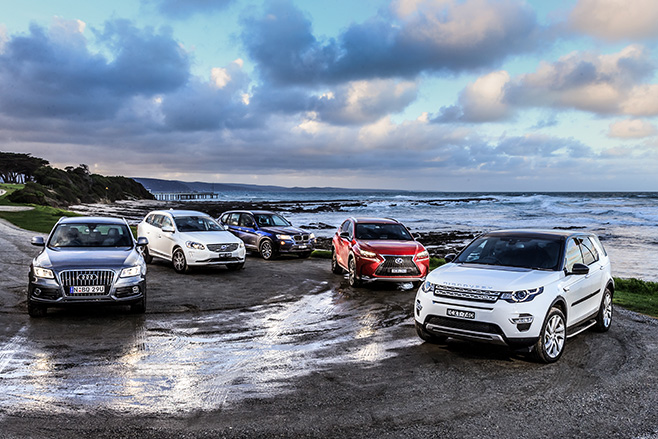
In many ways, the NX300h deserves a look-in, despite its uninspired dynamics and unsettled ride. If your commute is over smooth, relatively straight roads, you’ll probably love its relaxed ways – just like a hit of Valium – but its packaging limitations and design compromises mean it’s an SUV for undemanding couples hooked by its ‘Hybrid’ allure.
The Volvo is almost as big a shock as the BMW, but in a much more satisfying way. A true Viking’s heart, a strong body, lovely interior, unparalleled safety and strong value help combat its lumpy suspension and wooden steering. If neither of those points matter, soak up the Swedish salubriousness and smile.
Despite Australia’s ongoing love affair with the Audi Q5, it has never been a Wheels favourite, yet it very nearly caused an upset here, on the strength of its 85 percent-plus consistency.
Meanwhile, as handsome, spacious, accessible and versatile as Land Rover’s Discovery Sport is, it suffered from a few technical glitches on this test – a spell in limp-home mode, a dodgy idle-stop system that completely shut down the entire vehicle on two occasions, and a recalcitrant touchscreen that sometimes refused to obey orders.
That Land Rover had a seven-year head start over Audi and failed to convincingly run away with this comparison is a warning that, until the Disco Sport scores all-new drivetrains, it’s only just in front of the pack. The fact that Audi’s next-gen Q5 isn’t due here until at least 2017 buys Land Rover some time, but that car may be a giant-slayer. And so might Mercedes’ forthcoming GLC, now less than six months away.
Here’s the real killer result, though: Despite their inexorable rise over the last decade, we’d still prefer the lighter, cheaper, more efficient and more fun BMW 3 Series Touring, Audi A4 Avant, Volvo V60, Lexus IS and Jaguar XE over any of their medium SUV offshoots. If only everyone felt the same way.
Sign up here to receive the latest round-up of Wheels news, reviews and video highlights straight to your inbox each week.

